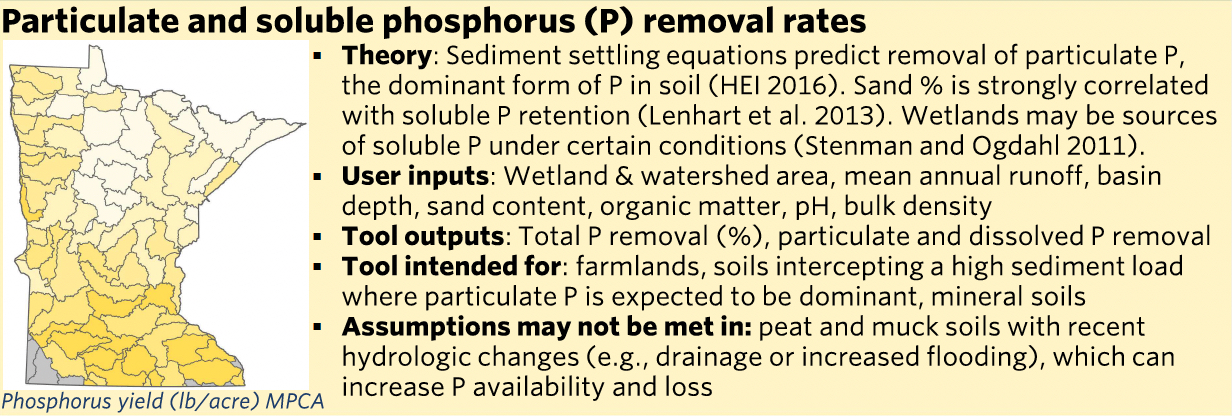
A tool to estimate the nutrient removal and carbon storage benefits of wetlands to prioritize conservation and restoration in the upper Midwest.
This wetland-scale planning tool uses publicly available data on water quality, soil properties, and wetland-watershed relationships to estimate nitrogen removal, phosphorus removal, and carbon sequestration to maximize the benefits of wetland conservation and restoration.
Wetland Toolbox technical memo
Using the toolbox:
Users input data (e.g., watershed area, nutrient loads) in the spreadsheet. Literature values are used to estimate nutrient removal and storage for a specified area. Field data, local knowledge, or other sources of input values can improve tool outputs. Hydraulic Loading Rate is the ratio of annual watershed water volume to wetland area (m/year).




Contact: Dr. Chris Lenhart
References
Ahlering, M., Blann, K., Cornett, M., Graber, S., Lenhart, C., & White, M. (2021) Nature and Climate: Solutions for Minnesota. TNC. Bender, L and Lenhart, C. 2020. Wetland Restoration Effectiveness Tool: Technical Memo. Unpublished TNC project report. Crumpton, W.G., Stenback, G.A., Fisher, S.W., Stenback, J.Z. and Green, D.I., 2020. Water quality performance of wetlands receiving nonpoint‐source nitrogen loads: Nitrate and total nitrogen removal efficiency and controlling factors. Journal of Environmental Quality.
Houston Engineering (HEI). 2016. PTMAPP: Theory and Development Documentation. HEI No. 6059-051. Lenhart, C., Titov, M., Ulrich, J., Nieber, J., and Suppes, B. (2013). The Role of Hydrologic Alteration and Riparian Vegetation Dynamics in Channel
Evolution along the Lower Minnesota River. Transactions of the ASABE. 56. 549-561. 10.13031/2013.42686. Steinman, A. and Ogdahl, M. 2011. Does converting agricultural fields to wetlands retain or release P? J. of the N. Amer. Benth. Society 30(3):820-830.